This article was co-authored by Zora Degrandpre, ND. Dr. Zora Degrandpre is a Natural Health Doctor and Licensed Naturopathic Physician in Vancouver, Washington. She is a grant reviewer for the National Institutes of Health and the National Center for Complementary and Alternative Medicine. She received her ND from the National College of Natural Medicine in 2007.
There are 19 references cited in this article, which can be found at the bottom of the page.
wikiHow marks an article as reader-approved once it receives enough positive feedback. In this case, 100% of readers who voted found the article helpful, earning it our reader-approved status.
This article has been viewed 156,316 times.
If your child has chickenpox, they are probably a very unhappy camper. While chickenpox will generally clear up on its own without medication,[1] there are different ways you can make your child more comfortable while their body fights the virus. In particular, there are some basic guidelines you can follow to keep your child comfortable, as well as natural remedies you can use to relieve itching, heal blisters, and get rid of chickenpox scars. If your child has severe symptoms or if someone in your home has a weakened immune system, it’s important to seek medical care.
Steps
Treatment Basics
-
1Keep your child home from school. When your child gets chickenpox, they can very easily pass it on to other children who have not yet had the illness and have not gotten vaccinated against it. Because of this, it is very important to keep your child at home instead of taking them to school. It is also important that your child gets plenty of rest and water so that they can recover more quickly. Put on your child’s favorite movie and keep them on the couch or in bed if you can.[2]
- Keep your child at home for at least 7 days once the first spots form.
- You should also monitor the spots–once they dry out, your child can go back to school. This process might take longer than 7 days.[3]
-
2Make sure your child stays hydrated. It is important to make sure that your child drinks plenty of liquids, particularly if they have a fever or feel ill.[4] Provide plenty of plain water. Use a fun cup or bottle to encourage your child to drink more water.Advertisement
-
3Feed your child soft foods that are easily digestible. Sadly, chickenpox blisters can also form inside the throat. If this happens, your child will have a hard time swallowing. Because of this, you will need to feed your child soft foods that are easy on the throat and on the tummy. Soft foods include:[5] [6]
- Soups: classic chicken noodle soup can help soothe the throat
- Ice cream, popsicles, and frozen yogurt.
- Yogurt, pudding, and cottage cheese.
- Soft bread.
- Avoid spicy foods, as they can make the blisters feel worse.[7]
-
4Keep your child’s nails short to avoid breaking the skin. While this might sound odd, it is important to cut your child’s nails so that they cannot do damage to the blisters if they scratch them. While they should be kept from scratching the blisters as much as possible, cutting their nails will ensure that they do not break them open. When blisters get scratched open, they are much more likely to become infected.[8]
- If your infant gets chickenpox, put mittens on them to keep them from scratching at the blisters.
-
5Offer acetaminophen if your child has a fever. Acetaminophen is a painkiller and fever reducer. It can temporarily relieve your child of the uncomfortable side effects that go along with chickenpox, like fever and lack of appetite. However, you should always consult your doctor before giving your child any medication.[9]
- The oral dose for a child is based on the child's age and weight. Refer to the instructions on the packaging or the dosing info provided by a pediatrician.
- Never give your child aspirin. In rare cases, aspirin can cause a life-threatening reaction, called Reye’s syndrome, in children under 18.
-
6Try using antihistamines to relieve itchiness. The blisters and rashes from chickenpox may cause your child serious discomfort. Over-the-counter antihistamines like Benadryl can help to relieve the itching by reducing the swelling in the blisters.[10] Again, talk to your doctor before giving your child antihistamines. Some common over-the-counter antihistamines include:
- Always follow the dosing instructions on the label.
-
7Get a prescription for Acyclovir if your child has a high risk of complications. The antiviral acyclovir (brand name Zovirax) can slow the spread of the chickenpox virus and lessen the symptoms, such as blisters and rash. Treatment generally starts within 24 to 48 hours of when the rash appears. You will need to get a prescription for this medication from your child’s doctor. Acyclovir is also available as a cream.[11]
Treating Itchiness and Blisters with Home Remedies
-
1Put calamine lotion on the skin. Calamine lotion is a salve that you can put on your child’s blisters. It is a good idea to have your child take a bath before putting the lotion on. The lotion has a cooling effect that can make the blisters much more tolerable and can help your child get to sleep at night.[12]
- Put a little dollop of the lotion on each of their blisters and rub it in gently.
-
2Rub ice cubes on the itchy spots for 10 minutes at a time. If your child is in serious discomfort, you can rub ice cubes on the itchy blisters to bring them some relief. The ice helps to numb the area so that the swelling and itchiness subside.[13]
-
3Have your child take cool baths and showers. Soaking in cool water for 10 minutes can help to soothe your child’s itchy skin while also making them more comfortable if they are feeling ill. You can also run a warm shower or bath for your child if they don’t like the cool water.[14]
- However, do not let your child take hot showers, as exposure to hot water can dry out their skin and make the itchiness caused by chickenpox worse.[15]
-
4Give your child an oatmeal bath. Oatmeal can soothe your child’s itchy skin. The protein, fats, and sugar content in oatmeal help to protect and hydrate the skin so that the blisters become easier to deal with. Use colloidal oatmeal when possible, since it's already finely ground.[16] To make an oatmeal bath:[17]
- Grind 2 cups (180 g) of plain oatmeal into a fine dust using a blender or food processor. While this is not necessary, it does help the bathwater absorb the oatmeal when you make an oatmeal bath.
- Run a warm bath and pour the oatmeal in. Stir and let the mixture sit for 15 minutes or so.
- Let your child soak in the bath for 20 to 30 minutes. Help your child to towel off after the bath.
-
5Soak your child in a baking soda bath. Baking soda is a natural acid neutralizer, which means that it can help to soothe your child’s itchy skin.[18] To make a baking soda bath:
- Draw a warm bath and then dissolve 1 cup (221 g) of baking soda for each 1 inch (2.5 cm) of warm water. Stir the mixture together and then let your child soak in the bath for 15 or so minutes. Help your child to pat their skin dry with a clean towel and avoid rubbing the skin, as this can irritate the pox.
-
6Apply medical-grade honey to the blisters. The antibacterial properties and the sugar content of honey will help to reduce the itchiness your child feels because of their blisters, while also speeding up your child’s recovery. Use Manuka honey, not processed store-bought honey.[19]
- Wash your hands with warm water and soap. Use your finger to apply honey to each of the itchy blisters 3 times a day.[20]
-
7Apply aloe vera gel to the blisters. Aloe vera has long been known to rejuvenate the skin and clear up infections. When your child has chickenpox blisters, aloe vera can help to keep the blisters from becoming infected, while also speeding up the healing process.[21] To apply aloe vera gel:
- Wash your hands with warm water and soap. Use a finger to apply a pea-sized drop of aloe vera gel on each of the blisters.
When to Seek Medical Treatment
-
1Talk to a pediatrician if you think your child has chickenpox. While you may be pretty sure that your child has chickenpox, it’s a good idea to talk to their doctor to be sure. They can rule out any other possible causes for your child’s symptoms and prescribe medications, if necessary. Before bringing your child to the doctor’s office, call ahead and let them know that you think they might have chickenpox. Common symptoms of chickenpox include:[22]
- Fever
- Tiredness or a general feeling of being ill
- Headache
- Reduced appetite
- A rash consisting of raised, reddish bumps that appear over several days. The bumps will eventually form blisters that break and crust or scab over.
-
2Call a doctor if the rash spreads to your child’s eyes. In rare cases, the chickenpox rash can spread to other parts of the body, such as the eyes.[23] If you notice lesions or redness in your child’s eyes when they have the chickenpox, call their pediatrician immediately or take them to the emergency room or an urgent care clinic.
- They might also prescribe eye drops to help soothe pain and inflammation in the affected eye(s). [24]
-
3Seek immediate medical care if your child has severe symptoms. Chickenpox is usually a mild disease in otherwise healthy children, but it can sometimes cause serious complications. Call your pediatrician immediately or take your child to the emergency room if you see symptoms such as:[25]
- Dizziness or disorientation
- A rapid heartbeat
- Difficulty breathing or shortness of breath
- Tremors, muscle weakness, or loss of coordination
- Vomiting
- A cough that keeps getting worse
- A stiff neck
- A fever higher than 102 °F (39 °C)
-
4Get medical help if anyone in your home has a weakened immune system. A chickenpox infection can be dangerous for anyone who has a compromised immune system. If you’re concerned that anyone in your home may be at risk from being exposed to chickenpox, contact your doctor for advice.[26]
- A weakened immune system may be caused by certain health conditions, such as HIV/AIDS or cancer. It is also associated with some medications, such as steroids or chemotherapy drugs.
- Children under 6 months old are also at risk.
- If you or someone in your house is pregnant and has never had chickenpox, consult your doctor right away. A chickenpox infection during pregnancy can cause complications for the growing baby.
Expert Q&A
Did you know you can get expert answers for this article?
Unlock expert answers by supporting wikiHow
-
QuestionHow many times can I have chickenpox?
 Chris M. Matsko, MDDr. Chris M. Matsko is a retired physician based in Pittsburgh, Pennsylvania. With over 25 years of medical research experience, Dr. Matsko was awarded the Pittsburgh Cornell University Leadership Award for Excellence. He holds a BS in Nutritional Science from Cornell University and an MD from the Temple University School of Medicine in 2007. Dr. Matsko earned a Research Writing Certification from the American Medical Writers Association (AMWA) in 2016 and a Medical Writing & Editing Certification from the University of Chicago in 2017.
Chris M. Matsko, MDDr. Chris M. Matsko is a retired physician based in Pittsburgh, Pennsylvania. With over 25 years of medical research experience, Dr. Matsko was awarded the Pittsburgh Cornell University Leadership Award for Excellence. He holds a BS in Nutritional Science from Cornell University and an MD from the Temple University School of Medicine in 2007. Dr. Matsko earned a Research Writing Certification from the American Medical Writers Association (AMWA) in 2016 and a Medical Writing & Editing Certification from the University of Chicago in 2017.
Family Medicine Physician
-
QuestionCan I apply neem oil on the blisters to ease dryness?
 Zora Degrandpre, NDDr. Zora Degrandpre is a Natural Health Doctor and Licensed Naturopathic Physician in Vancouver, Washington. She is a grant reviewer for the National Institutes of Health and the National Center for Complementary and Alternative Medicine. She received her ND from the National College of Natural Medicine in 2007.
Zora Degrandpre, NDDr. Zora Degrandpre is a Natural Health Doctor and Licensed Naturopathic Physician in Vancouver, Washington. She is a grant reviewer for the National Institutes of Health and the National Center for Complementary and Alternative Medicine. She received her ND from the National College of Natural Medicine in 2007.
Natural Health Doctor Yes, you can use neem oil. Neem oil has anti-bacterial, anti-viral and wound-healing properties. Before you use neem oil on blisters, though, test it on a small area of skin to make sure you don't have any sensitivity to the oil. Also, use something like a Q-tip or a cotton ball to apply the neem oil rather than using your fingers to apply.
Yes, you can use neem oil. Neem oil has anti-bacterial, anti-viral and wound-healing properties. Before you use neem oil on blisters, though, test it on a small area of skin to make sure you don't have any sensitivity to the oil. Also, use something like a Q-tip or a cotton ball to apply the neem oil rather than using your fingers to apply. -
QuestionCan I take a daily bath if I have the chicken pox?
 Zora Degrandpre, NDDr. Zora Degrandpre is a Natural Health Doctor and Licensed Naturopathic Physician in Vancouver, Washington. She is a grant reviewer for the National Institutes of Health and the National Center for Complementary and Alternative Medicine. She received her ND from the National College of Natural Medicine in 2007.
Zora Degrandpre, NDDr. Zora Degrandpre is a Natural Health Doctor and Licensed Naturopathic Physician in Vancouver, Washington. She is a grant reviewer for the National Institutes of Health and the National Center for Complementary and Alternative Medicine. She received her ND from the National College of Natural Medicine in 2007.
Natural Health Doctor Yes, but be careful about a few things. First, be gentle and don't rub the blisters with a towel. Dab yourself dry-- and then wash the towels in hot, soapy water. You want to dry out any blisters, but you do NOT want to dry out your skin, so gently apply a good moisturizer on your skin-- again, be careful around any blistered areas. Wash your hands after applying the moisturizers.
Yes, but be careful about a few things. First, be gentle and don't rub the blisters with a towel. Dab yourself dry-- and then wash the towels in hot, soapy water. You want to dry out any blisters, but you do NOT want to dry out your skin, so gently apply a good moisturizer on your skin-- again, be careful around any blistered areas. Wash your hands after applying the moisturizers.
References
- ↑ https://www.mayoclinic.org/diseases-conditions/chickenpox/diagnosis-treatment/drc-20351287
- ↑ https://kidshealth.org/en/parents/chicken-pox.html
- ↑ https://kidshealth.org/en/kids/chicken-pox.html
- ↑ https://www.kidshealth.org.nz/chickenpox
- ↑ https://www.mayoclinic.org/diseases-conditions/chickenpox/diagnosis-treatment/drc-20351287
- ↑ https://www.piads.org/surgical-instructions/food-list/
- ↑ https://www.okadoc.com/blog/healthy-lifestyle/foods-to-eat-and-avoid-when-have-chickenpox/
- ↑ https://www.aad.org/public/parents-kids/childhood-conditions/chicken-pox
- ↑ https://www.mayoclinic.org/diseases-conditions/chickenpox/diagnosis-treatment/drc-20351287
- ↑ https://www.mayoclinic.org/diseases-conditions/chickenpox/diagnosis-treatment/drc-20351287
- ↑ https://www.mayoclinic.org/diseases-conditions/chickenpox/diagnosis-treatment/drc-20351287
- ↑ https://www.seattlechildrens.org/conditions/a-z/chickenpox/
- ↑ https://www.seattlechildrens.org/conditions/a-z/chickenpox/
- ↑ https://lppfh.com/Advice/Chickenpox
- ↑ https://www2.hse.ie/conditions/chickenpox-babies-children/treatment/
- ↑ https://www.mayoclinic.org/diseases-conditions/chickenpox/diagnosis-treatment/drc-20351287
- ↑ https://parenting.firstcry.com/articles/oatmeal-bath-for-babies-benefits-and-preparation-method/
- ↑ https://www.nwphysicians.com/everything-you-need-to-know-about-chickenpox-2/
- ↑ https://www.ncbi.nlm.nih.gov/pmc/articles/PMC3401066/
- ↑ https://www.ncbi.nlm.nih.gov/pmc/articles/PMC5661189/
- ↑ https://www.ncbi.nlm.nih.gov/pmc/articles/PMC3611630/
- ↑ https://www.mayoclinic.org/diseases-conditions/chickenpox/symptoms-causes/syc-20351282
- ↑ https://www.mayoclinic.org/diseases-conditions/chickenpox/symptoms-causes/syc-20351282
- ↑ https://www.msdmanuals.com/home/eye-disorders/corneal-disorders/herpes-zoster-ophthalmicus
- ↑ https://www.seattlechildrens.org/conditions/a-z/chickenpox/
- ↑ https://www.mayoclinic.org/diseases-conditions/chickenpox/symptoms-causes/syc-20351282
About This Article
Having chickenpox isn’t fun, but you can make yourself or your child more comfortable with a few home treatments. Stay at home and drink plenty of water until you’re better. Rub a little calamine lotion, honey, or an ice cube on your spots to soothe them. Take an antihistamine to reduce the itchiness of your spots. You should also cut your nails so you won’t do too much damage if you accidentally scratch at your spots. Take an acetaminophen or ibuprofen to reduce your pain and fever. You can also take a warm bath with oatmeal, baking soda, or turmeric to soothe your blisters. For more tips from our Medical co-authors, including how to help get rid of chicken pox scars at home, read on.
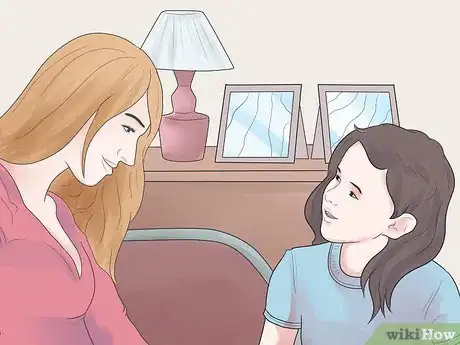
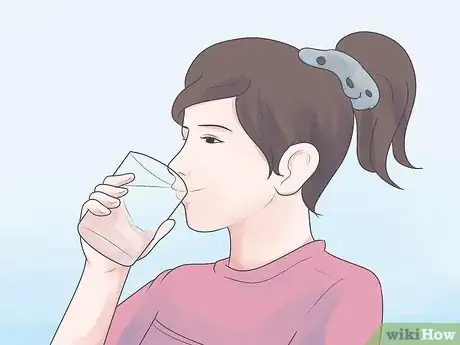

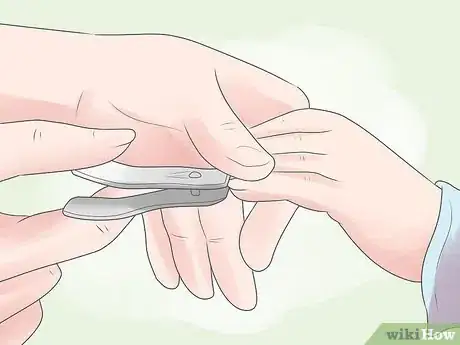
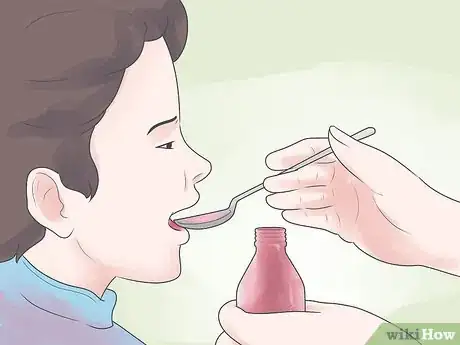
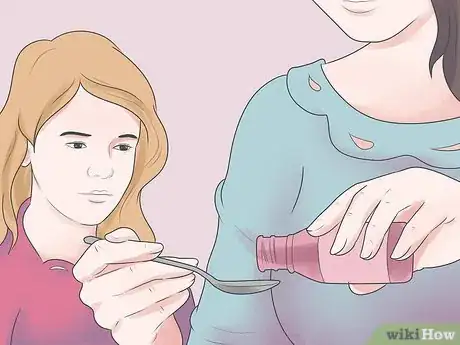

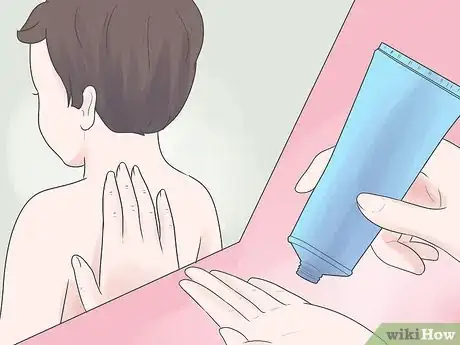
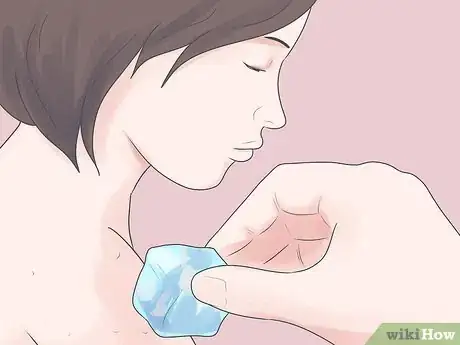
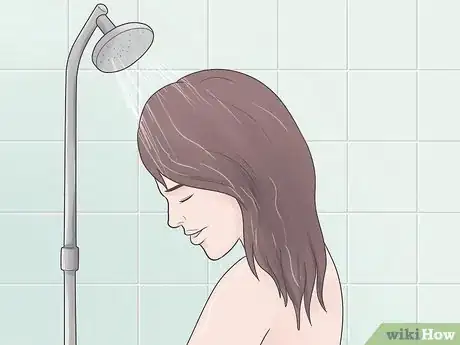

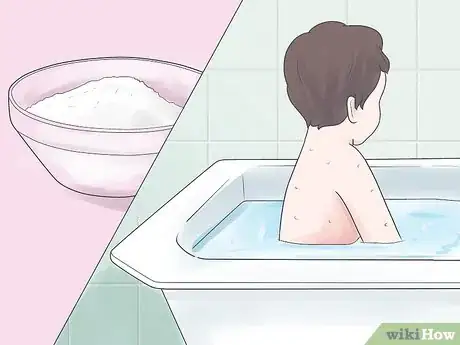
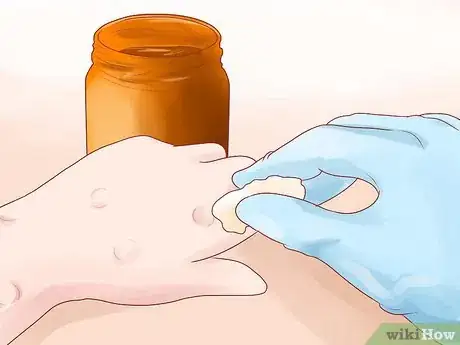
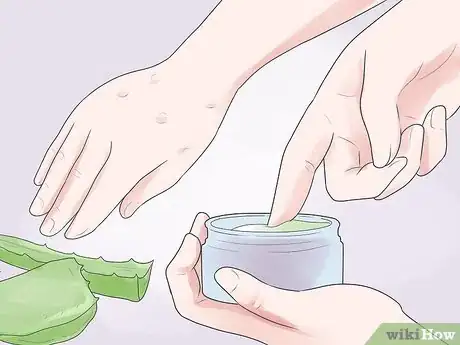


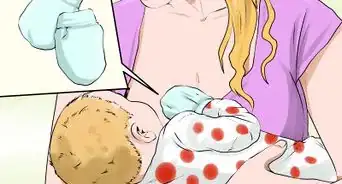
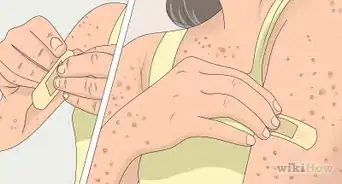
-Step-13.webp)




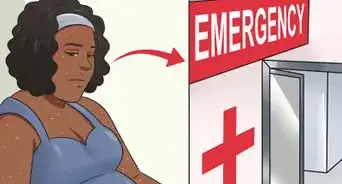

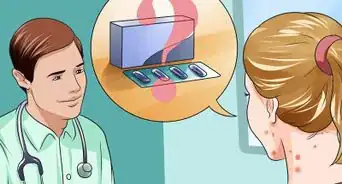












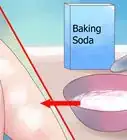

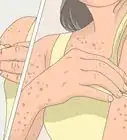



































Medical Disclaimer
The content of this article is not intended to be a substitute for professional medical advice, examination, diagnosis, or treatment. You should always contact your doctor or other qualified healthcare professional before starting, changing, or stopping any kind of health treatment.
Read More...